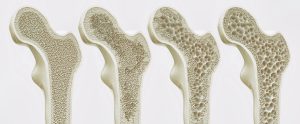Spring has sprung, and with it comes the annual urge to shake off the winter slump! Whether it’s dusting off the sneakers for a morning walk, hitting the gym, or chasing the kids around the park, moving your body is one of the best investments you can make in your health.
And here’s the fun part: while weight loss injections are making headlines, the real magic happens when exercise joins the mix. Think stronger bones, sharper minds, better sleep, more energy, and even fewer colds! It’s about building a body that not only looks healthier but feels unstoppable.

Rachel Halleen
According to the Australian Bureau of Statistics, in 2022, 65.8% of Australian adults were in the overweight or obese category. This is a 3% increase from figures in 2011-12. It may well be for this reason that we have seen an increase in pharmacotherapy for obesity, that being, the prescription of weight loss medication. (1)
Brands names include Duromine, Wegovy, Ozempic, Mournjaro, Saxenda, and many more. These drugs act physiologically by reducing appetite, providing satiation with smaller portioned meals, and may prolong satiety following a meal (2). Whilst these injections may be viewed as “the easy way to lose weight” for some individuals, we must recognise that they are only an adjunct therapy to lifestyle intervention (regular exercise and healthy eating), and not a replacement.
A systematic review by Sargeant et. al (3) found that in over half the studies identified, the reduction in lean body mass proportion ranged from 20-50% of total weight loss for individuals undergoing weight loss pharmacotherapy. Whilst muscle loss can be a common concern with weight loss interventions, it is crucial to understand the importance of maintaining muscle strength and function. A loss in muscle mass may have long-term implications for functional capacity, resisting energy expenditure, bone strength, metabolic health, and weight regain (4). Exercise training, more specifically resistance training, has the potential to increase muscle mass, therefore mitigating these potential long-term implications. Studies have also supported resistance training for preventing rebound weight gain upon cessation of weight loss pharmacotherapy.

Exercise benefits
Weight loss is one of the many benefits that may result from keeping to a healthy diet and regular exercise routine, but it is important to outline the other benefits of regular exercise that are not associated with weight loss pharmacotherapy:
Strong bones
- Research has shown that weight training can reduce the risk of developing osteoporosis by increasing bone mineral density. Individuals with osteoporosis should follow a tailor-made weight training routine from an exercise physiologist to best manage their condition.
Maintaining lean body mass
- Weight training can lead to improvements in muscle mass (also known as lean body mass). This can assist with weight loss due to the improvements in basal metabolism. Improvements in muscle tone are also a bonus when losing fat mass.
Mental health and well-being
- Exercise releases endorphins and serotonin, chemicals in our brain that improve mood and help to reduce stress. Exercise is therefore beneficial for the management of anxiety, depression and stress.
Improving cardiac health
- Regular exercise can reduce the risk of developing heart disease by helping to lower LDL cholesterol levels, increasing HCL cholesterol levels and helping to lower blood pressure. Regular exercise is also encouraged for individuals with heart disease as part of their cardiac rehabilitation.
Improving respiratory health
- Safe exercise prescription can also benefit individuals with respiratory conditions, including but not limited to, asthma and COPD. During exercise, the heart rate and breathing rate are elevated, hence improving heart and lung function.
Improving sleep quality
- Exercise has been shown to improve both sleep quality and sleep quantity. Exercise can help reduce the time it takes to fall asleep, help alleviate daytime sleepiness and can also reduce the need for sleep medications/supplements. Exercise is also recommended for individuals with obstructive sleep apnoea.
Reduce risk of injury
- With the strength improvements gained from weight training and exercise the risk of injury is reduced. Think about lifting and carrying heavy items around the home and how this can often lead to back pain or muscle strains. By keeping to a regular exercise regime that includes strength and aerobic training, this risk of injury can be reduced.
Strengthen immune system
- Regular moderate intensity exercise has been proven to improve the immune system by increasing the circulation of white blood cells. These cells help identify and fight pathogens and help reduce chronic inflammation.
Increase energy levels
- Regular exercise is beneficial in improving the body’s ability to use and produce energy. This can reduce fatigue and help cells to work more efficiently. Regular exercise also improved oxygen circulation to body tissues and the brain.
So, whilst weight loss injections may appear to be a desirable, and easy, tool to assist with weight loss, it is important to remember the other benefits of exercise that cannot be gained through weight loss medication. Keeping to a healthy diet and regular exercise routine will help to improve overall health and well-being whilst also improving quality of life.
The exercise guidelines for weight loss include:
- 150+ minutes of moderate intensity aerobic exercise, or 75+ minutes of vigorous intensity aerobic exercise per week.
- Strength training at least twice a week, focusing on major muscle groups.
- Reduce long periods of sedentary behaviour.
If you would like help with developing an exercise program suited to your lifestyle and health goals, please don’t hesitate to contact 4 Life on 9583 5200 to book an initial assessment with one of our Accredited Exercise Physiologists.
- https://www.abs.gov.au/statistics/health/health-conditions-and-risks/waist-circumference-and-bmi/latest-release#:~:text=for%20more%20information.-,Body%20Mass%20Index%20(BMI)%20prevalence,ten%20(31.7%25)%20were%20obese
- https://www.racgp.org.au/afp/2017/july/pharmacotherapy-for-obesity
- Sargeant JA, Henson J, King JA, Yates T, Khunti K, Davies MJ. A Review of the Effects of Glucagon-Like Peptide-1 Receptor Agonists and Sodium-Glucose Cotransporter 2 Inhibitors on Lean Body Mass in Humans. Endocrinol Metab (Seoul). 2019 Sep;34(3):247-262. doi: 10.3803/EnM.2019.34.3.247. PMID: 31565876; PMCID: PMC6769337.
- Joao Carlos Locatelli, Juliene Gonc¸alves Costa, Andrew Haynes, Louise H. Naylor, P. Gerry Fegan, Bu B. Yeap, and Daniel J. Green. Incretin-Based Weight Loss Pharmacotherapy: Can Resistance Exercise Optimize Changes in Body Composition? Diabetes Care 2024; 47(10):1718-1730.
By Rachel Halleen
Accredited Exercise Physiologist






